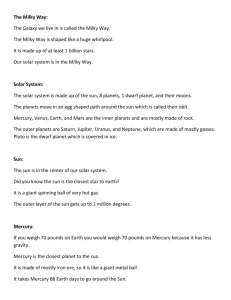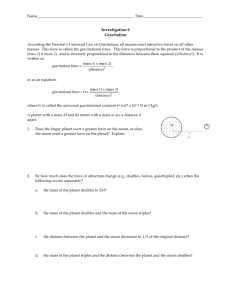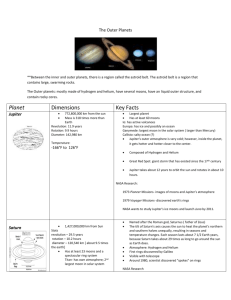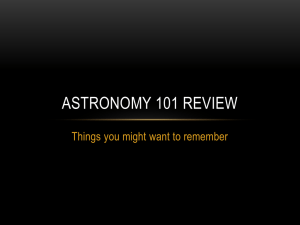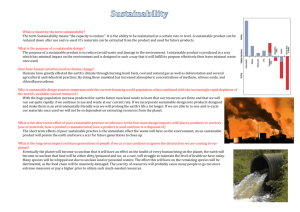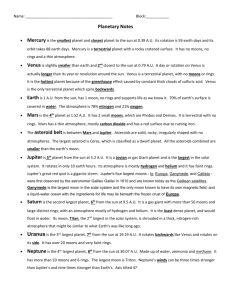Solar System Worksheet: Planets, Gravity, and Space Exploration
advertisement
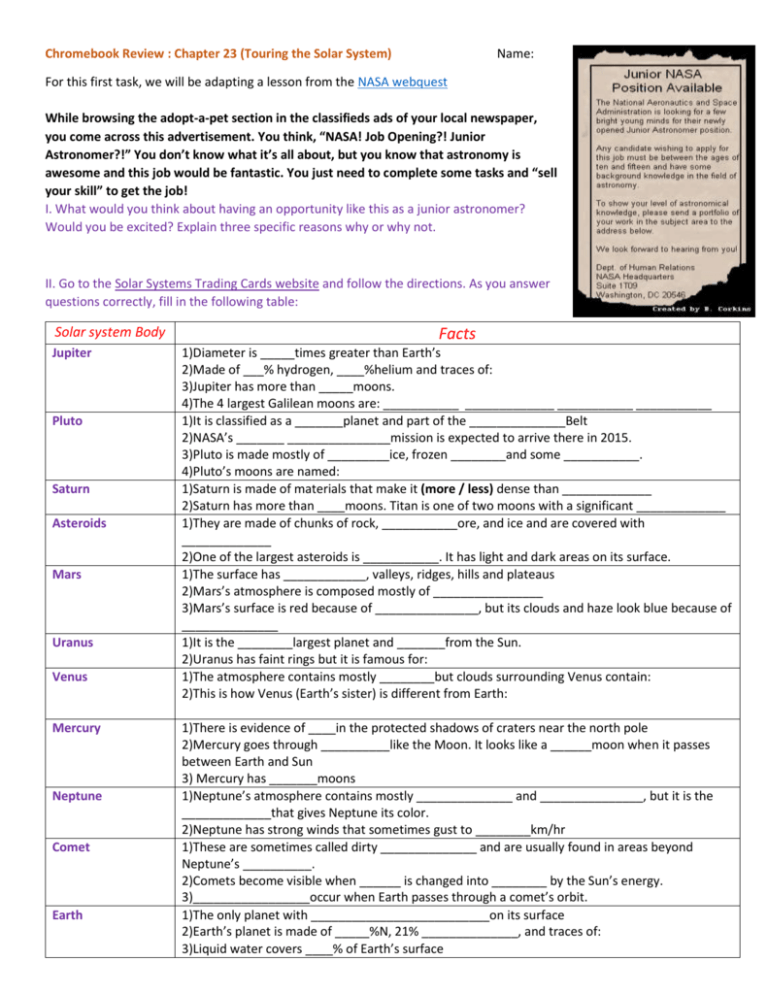
Chromebook Review : Chapter 23 (Touring the Solar System) Name: For this first task, we will be adapting a lesson from the NASA webquest While browsing the adopt-a-pet section in the classifieds ads of your local newspaper, you come across this advertisement. You think, “NASA! Job Opening?! Junior Astronomer?!” You don’t know what it’s all about, but you know that astronomy is awesome and this job would be fantastic. You just need to complete some tasks and “sell your skill” to get the job! I. What would you think about having an opportunity like this as a junior astronomer? Would you be excited? Explain three specific reasons why or why not. II. Go to the Solar Systems Trading Cards website and follow the directions. As you answer questions correctly, fill in the following table: Solar system Body Jupiter Pluto Saturn Asteroids Mars Uranus Venus Mercury Neptune Comet Earth Facts 1)Diameter is _____times greater than Earth’s 2)Made of ___% hydrogen, ____%helium and traces of: 3)Jupiter has more than _____moons. 4)The 4 largest Galilean moons are: ___________ _____________ ___________ ___________ 1)It is classified as a _______planet and part of the ______________Belt 2)NASA’s _______ _______________mission is expected to arrive there in 2015. 3)Pluto is made mostly of _________ice, frozen ________and some ___________. 4)Pluto’s moons are named: 1)Saturn is made of materials that make it (more / less) dense than _____________ 2)Saturn has more than ____moons. Titan is one of two moons with a significant _____________ 1)They are made of chunks of rock, ___________ore, and ice and are covered with _____________ 2)One of the largest asteroids is ___________. It has light and dark areas on its surface. 1)The surface has ____________, valleys, ridges, hills and plateaus 2)Mars’s atmosphere is composed mostly of ________________ 3)Mars’s surface is red because of _______________, but its clouds and haze look blue because of ______________ 1)It is the ________largest planet and _______from the Sun. 2)Uranus has faint rings but it is famous for: 1)The atmosphere contains mostly ________but clouds surrounding Venus contain: 2)This is how Venus (Earth’s sister) is different from Earth: 1)There is evidence of ____in the protected shadows of craters near the north pole 2)Mercury goes through __________like the Moon. It looks like a ______moon when it passes between Earth and Sun 3) Mercury has _______moons 1)Neptune’s atmosphere contains mostly ______________ and _______________, but it is the _____________that gives Neptune its color. 2)Neptune has strong winds that sometimes gust to ________km/hr 1)These are sometimes called dirty ______________ and are usually found in areas beyond Neptune’s __________. 2)Comets become visible when ______ is changed into ________ by the Sun’s energy. 3)_________________occur when Earth passes through a comet’s orbit. 1)The only planet with __________________________on its surface 2)Earth’s planet is made of _____%N, 21% ______________, and traces of: 3)Liquid water covers ____% of Earth’s surface Sun 1)The sun is an ordinary star, one of _____________________or more in our galaxy 2)The sun is made of _______percent hydrogen and _____percent helium. 3)The Sun is about ________billion years old and will produce energy for another ___________yrs III. “And Weighing in at 2,800 pounds…” A. Before you start working on the activity, take 30 seconds to close your eyes and imagine yourself walking on the moon. How would you describe it? And how do you know that is how you would walk on the moon? In this activity you are going to compare your weight to your weight on other Solar system bodies. B. Make sure to READ all directions. Open the "And Weighing in at 2,800 Pounds..." Spreadsheet. On the spreadsheet, enter in your approximate weight in pounds in the yellow square. And then answer the following questions based on the spreadsheet calculations. 1. Define gravity in your own words. 2. On which planet do you weigh the most? How much more do you weigh on that planet? 3. On which location do you weigh the least? How much less do you weigh on that planet? 4. Which planet has a gravitational force that is equal to 37.7% of the Earth’s gravitational force? 5. Which planet has the gravitational force that is closest to Earth’s gravitational force? 6. Does your mass change depending on the gravitational force? Why or why not? 7. Generally, do you weigh more on gaseous planets or terrestrial plants? How do you know? 8. Planet X has a gravitational factor of .156. Given your answer above, do you think it would more likely be a gaseous planet or a terrestrial planet? Why do you think so? 9. Using the empty space provided below to calculate answers, figure out what a… a. 5 pound tub of butter would weigh on Neptune: ____________________ b. 8 pound baby would weigh on Jupiter: _____________________________ c. 32,000 pound school bus would weigh on the moon: _________________ d. 65 pound fireproof dog would weigh on the Sun: ______________________ e. 380 pound sumo wrestler on Venus: ___________________ IV. Go to the Chapter 23 Quizlet and complete the following: A. Complete the flashcards. Approximately what percentage of the flashcards did you get correct? ___________ B. Construct a 30 question (all multiple choice) test. What was your score? ______________ C. Play Scatter! What was your time the first go around? _____________ How about the second attempt? ______


